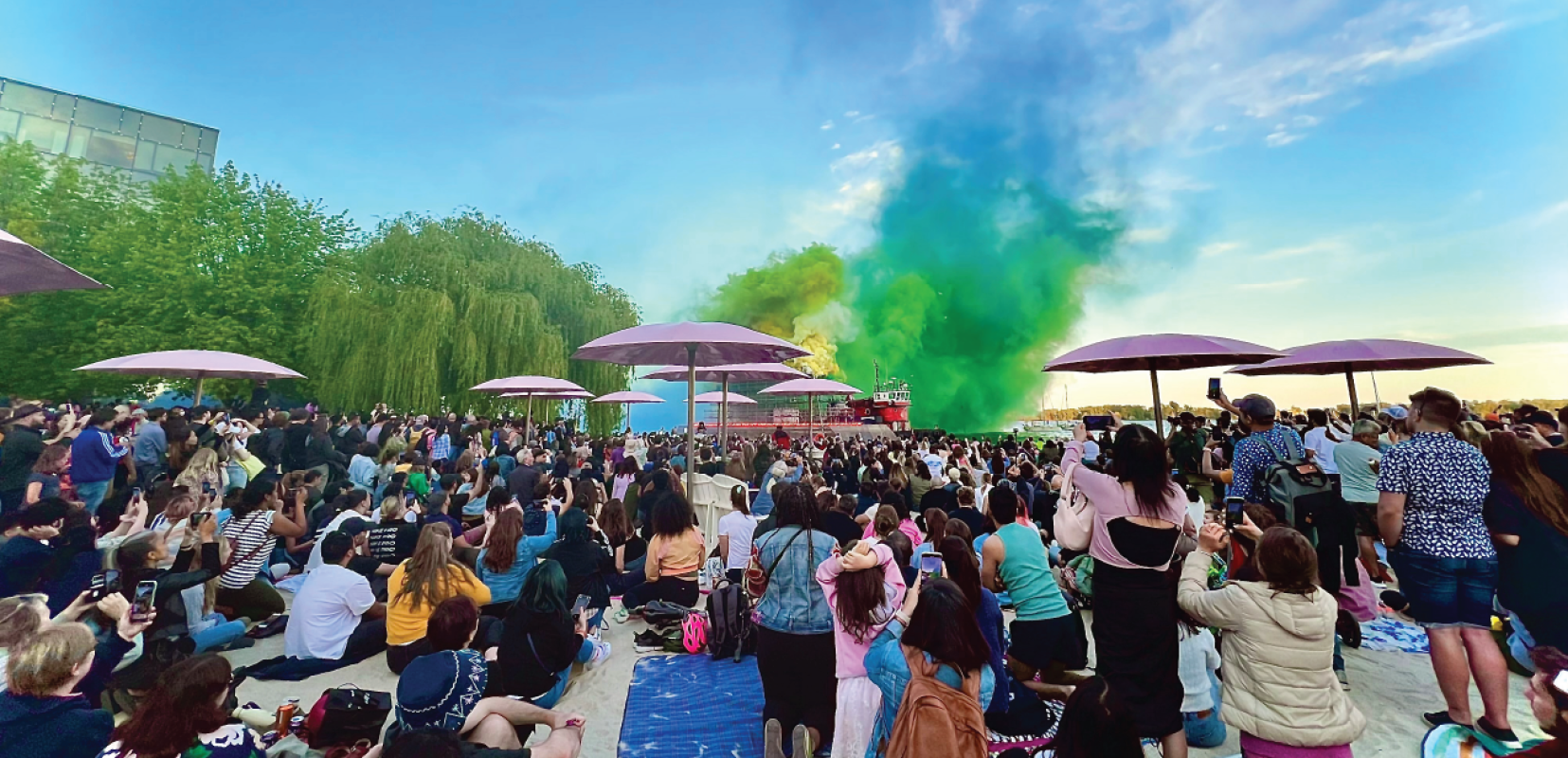Bringing Livable Neighbourhoods to Life
POSTED: APRIL 28, 2023
In This Blog:
-
Our approach to revitalization emphasizes factors like livability, public art and accessibility.
-
In 2023–2024, we plan to reach the 30% design milestone and consult kids, families and communities about the possibilities for a Destination Playground.
-
We’ve already added more than 43 hectares (106 acres) of parks and public spaces to waterfront neighbourhoods and have two more parks on the way.
-
This year, we will bring 2-3 temporary art pieces to the waterfront and advance design and fabrication for new permanent pieces.
-
We are developing Waterfront Accessibility Design Guidelines that will guide public realm design and will begin applying its principles across all Waterfront Toronto public realm projects once it’s finalized.
Waterfront Toronto was created to bring a holistic perspective to waterfront revitalization. This second of our three-part blog series highlighting key projects in our Rolling Five-Year Strategic Plan 2023/24-2027/28 focuses on our approach to revitalization. Our holistic approach emphasizes factors like livability, public art and accessibility, ensuring that individual projects contribute to — and benefit from — the success of the entire area.
Creating Magnetic Destinations
We’re adding 25 hectares (62 acres) of parks along the new Don River mouth. As part of this new park system, we intend to create a Destination Playground: a major free attraction featuring leading-edge playground design and nature play — one of a handful of such playgrounds in the world, and the first in Canada.
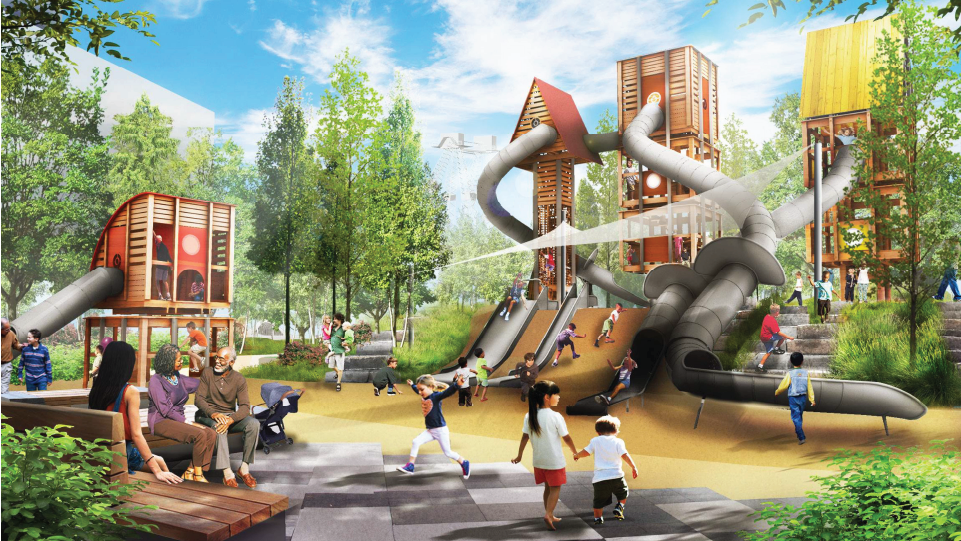
Destination Playground will be made possible by philanthropic fundraising, delivering a world-class amenity for children and families.
In 2023–2024, we plan to reach the 30% design milestone for the park and consult kids, families and communities about the possibilities for the park. We also hope to identify a lead donor to help make this project possible. Find out more about Destination Playground on page 32 of our Rolling Five-Year Strategic Plan.
Not only will the Destination Playground help Toronto become more child-friendly and bring young families to the area, but it is also expected to attract over a million visitors a year. Most importantly, it will provide children with opportunities for challenging play, which research has shown to have many developmental benefits.
While the completion of the Destination Playground is a longer-term goal, in the near term we are delivering public green spaces and parks for people to enjoy now, ensuring residents have places to unwind, be active and connect with nature. We’ve already added more than 43 hectares (106 acres) of parks and public spaces to waterfront neighbourhoods and have two more parks on the way.
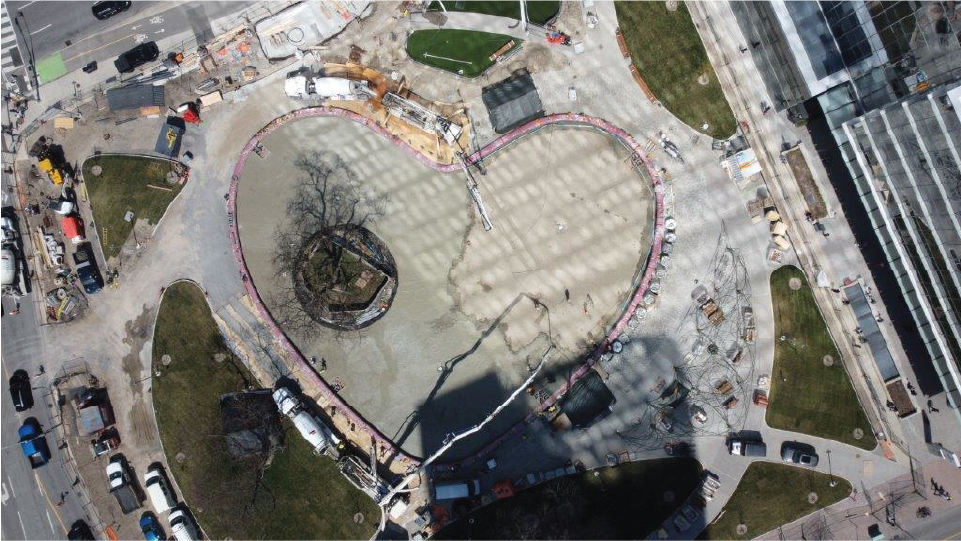
In 2023–2024, we’ll finish construction and open Love Park (York Street Park).
Love Park, located at the northeast corner of Queens Quay West and York Street, will create a lush green oasis on the waterfront providing the surrounding residents and office workers plenty of fixed and flexible seating options to gather and enjoy nature. It will also bring an off-leash area to the waterfront for our furry friends to run around freely.
This year, we will also progress the design of Rees Street Park, located at the northwest corner of Queens Quay West and Rees Street, across from the Rees WaveDeck.
Learn more about the livable neighbourhoods and magnetic destinations we’re creating on page 45 of the Strategic Plan.
Weaving Public Art Across the Waterfront
Public art is an important part of our approach to creating neighbourhoods that attract residents, businesses and visitors alike. In addition to commissioning permanent public art in new waterfront communities, we also lead a program of temporary art installations on both land and on water.
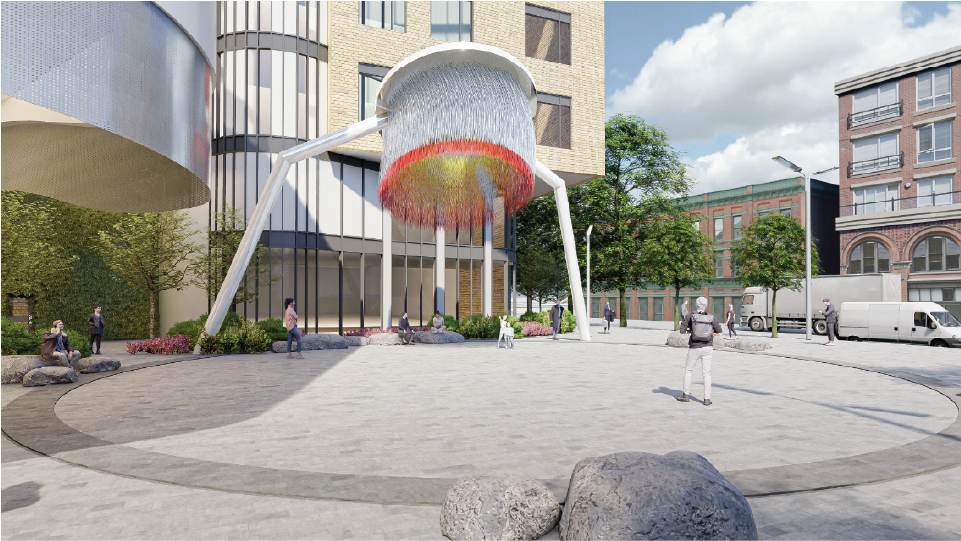
Rendering of In Equilibrium sculpture by artist Ludovic Boney, one of the two Indigenous pieces coming to the West Don Lands.
In 2023-2024, we aim to deliver two to three temporary installations and will continue supporting temporary works created through the Artist in Residence Program. We also plan to finalize designs and begin fabrication for two permanent Indigenous artworks in the West Don Lands and finalize the contract and advance the design for the art piece at the foot of Sherbourne Common.
Learn more about these exciting permanent and temporary additions to the waterfront on page 39.

The Art Trail will serve as a free, accessible outdoor exhibition space with works by local, national and international artists.
We are also working to bring an Art Trail to Villiers Island that will wrap around the southern edge of the island. This initiative took a critical step forward in 2022, as the Pierre Lassonde Family Foundation made a visionary $25 million gift toward its completion. We will advance the planning and design of the art trail in 2023-2024 while continuing the flood protection and infrastructure work required to support the area’s overall transformation.
Creating Accessible Public Spaces
As we work to deliver one vibrant waterfront that belongs to everyone, Waterfront Toronto is developing Waterfront Accessibility Design Guidelines that will guide public realm design. These guidelines will support achieving design excellence and accessible design, shaping our work in areas ranging from floating docks and promenades to playgrounds and off-leash areas for dogs. Learn more about our progress developing these guidelines on page 29.
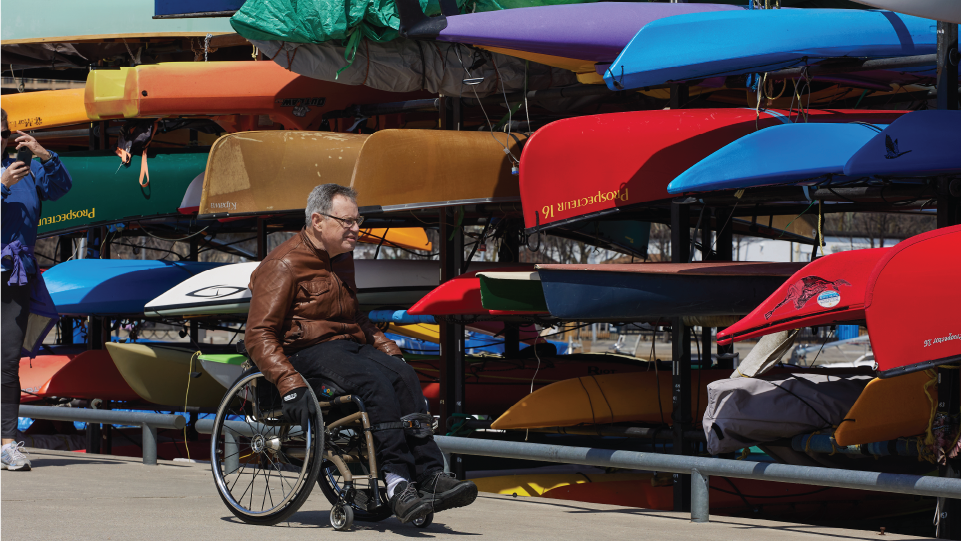
In 2023–2024, we will publish the draft guidelines, being developed in collaboration with our Advisory Committee on Accessibility, and carry out public engagement to build awareness and collect additional feedback. Once the document is finalized, its principles will be applied across all Waterfront Toronto public realm projects.
Learn more about these exciting projects and others in our 2023/24 Rolling Five-Year Strategic Plan.

